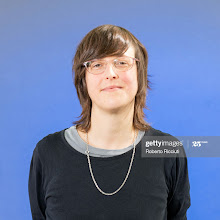In September 2009, the international journal of “critical perspectives on contemporary art and culture” Third Text dedicated an entire issue to contemplating a vision of the future of art, in which Araeen’s manifesto is published. In the preface, Araeen and his co-editor Richard Appignanesi give their own diagnosis of the predicament of artists “now as we face a legacy of failures in modern history that endangers the future prospects of humanity” (Araeen & Appignanesi 2009, p.500). Their suggestion is that we have reached a cynical and solipsistic impasse which it is essential to overcome:
“… the very concept of art will have to liberate itself from the two historical limits of containment and legitimisation. One is containment in the artist’s own narcissist ego; the other is art’s dependence for its legitimisation as art on the institutions that facilitate and promote art only as reified commodities placed in museum and marketplace showcases.” (Araeen & Appignanesi 2009, p.500)
Ego and individualism have always gone hand-in-hand with the relatively autonomous role the artist has historically enjoyed within society, however, it appears that these characteristics have only been exacerbated in recent years. Neoliberal ideology has led to a “convergence of artistic and entrepreneurial values” (J. Thatcher 2009, p.5) – flexible, creative and autonomous modes of operating have been co-opted by the business world, just as ‘the careerist mentality’ has been inherited by artists. Recent mainstream television programmes such as School of Saatchi (Priddle 2009) and Goldsmiths: But is it Art? (Kerr 2010), which pit artists’ egos and entrepreneurial skills against one another, show the extent to which these attitudes have become the norm.
The super-competitive environment of the ‘atomised art world’ engenders a survival instinct in artists which causes us, knowingly or not, to make our sole objective the expansion of our curricula vitae. The emphasis is on the development of a “narrative” – on forming a “brand identity” (Prince 2010, p.10), because this presents itself as the most efficient means to the desired ends of “recognition and fame” (Abbing 2002, p.82). Trapped in a perpetual attempt to impress art world institutions, artists inevitably end up feeding them with the art that they think they want rather than stopping to question exactly what they are producing and why.
In a pre-neoliberal world, choosing the role of artist was seen as an alternative to the mainstream: a point of resistance, a political statement even (Walker 2002) – art offered a potential strategy of “opposition to capitalism” (J. Thatcher 2009, p.6). Now as a small component part in this means / end cycle – art – simply acts an instrument to serve the “career ambitions of self-centred artists” – its “significant critical and social function” (Araeen 2009, p.680) disabled in the process. But, at this particular point in our history, art’s power in “subverting the dominant hegemony” (Mouffe 2007) – in creating an ‘alternative knowledge’ – may be its only redeemable function.
How to Reconcile the Careerist Mentality with Our Impending Doom
By Ellie Harrison
May 2010
Contents
- Preface
- Global Warming Projection
- Setting the Scene
- The Careerist Mentality
- Our Impending Doom
- A Rude Awakening
- Now or Never
- Atomised Art World
- Free Our Minds
- Outside the Bubble
- Plan of Action
- New Moral Code
- Clandestine Insurgence
- Alternative Knowledge
- Practical Solutions
- Multi-Pronged Approach
- A Reconciled Practice
- Our Fully Functional Role
- References
